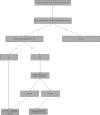Optional inferior vena cava filters in the trauma patient
- PMID: 21359016
- PMCID: PMC3036500
- DOI: 10.1055/s-0030-1247890
Optional inferior vena cava filters in the trauma patient
Abstract
Trauma patients are at exceedingly high risk of development of venous thromboembolism (VTE) including deep venous thrombosis and pulmonary embolism (PE). The epidemiology of VTE in trauma patients is reviewed. PE is thought to be the third major cause of death after trauma in those patients who survive longer than 24 hours after onset of injury. In fact, patients recovering from trauma have the highest rate of VTE among all subgroups of hospitalized patients. Various prophylactic and surveillance methods have been evaluated and found helpful in certain situations, but VTE complications can occur despite such measures. Therapeutic and prophylactic uses of inferior vena cava (IVC) filters in trauma patients are reviewed. Prophylactic IVC filter use is revealed to be a controversial subject with valid arguments on both sides of the issue. With the lack of prospective randomized trials of IVC filter use in trauma, it is impossible to make evidence-based recommendations. Unfortunately, two sets of guidelines are available for insertion of filters in trauma patients, with conflicting recommendations. The introduction of retrievable IVC filters seems to offer a unique solution for VTE protection in the trauma patient population, which often consists of younger members of our population. Lastly, current generations of FDA-approved retrieval filters are discussed.
Keywords: Venous thromboembolism; inferior vena cava filter; trauma.
Figures
References
-
- Shackford S R, Davis J W, Hollingsworth-Fridlund P, et al. Venous thromboembolism in patients with major trauma. Am J Surg. 1990;159:365–369. - PubMed
-
- McCartney J. Pulmonary embolism following trauma. Surg Gynecol Obstet. 1935;61:369–379.
-
- Sevitt S, Gallagher N. Venous thrombosis and pulmonary embolism. A clinico-pathological study in injured and burned patients. Br J Surg. 1961;48:475–489. - PubMed
-
- Sevitt S, Gallagher N G. Prevention of venous thrombosis and pulmonary embolism in injured patients. A trial of anticoagulant prophylaxis with phenindione in middle-aged and elderly patients with fractured necks of femur. Lancet. 1959;2:981–989. - PubMed
-
- Fitts W T, Jr, Lehr H B, Bitner R L, Spelman J W. An analysis of 950 fatal injuries. Surgery. 1964;56:663–668. - PubMed



